Call +(254) 703 030 000 / 751 483 999 / 721 704 777
- Home
- Power Transmission
- Linear Motion
- Linear Bearings
.....Read More

Ball Spline Nuts

Flange-Mount Linear Ball Bearings
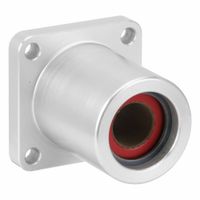
Flange-Mount Linear Plain Bearings
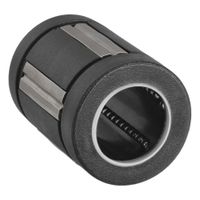
Linear Ball Bearings
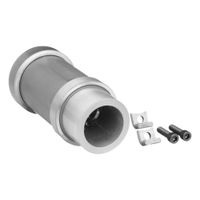
Linear Die Sets
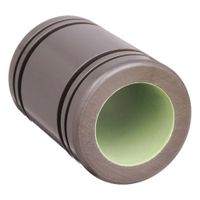
Linear Plain & Sleeve Bearings
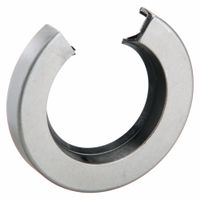
Linear Rings and Seals
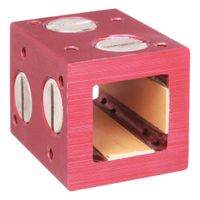
Linear Square Sleeve Bearings

Pillow Block Linear Ball Bearings

Pillow Block Linear Plain Bearings
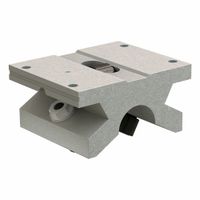
Round-Shaft Linear Roller Pillow Blocks
Frequently Asked Questions
What are linear bearings used for?
Linear bearings are mechanical components used to provide smooth, low-friction motion along a straight path. They are essential in applications where precise linear movement is required. These bearings support the load while allowing for linear motion, reducing friction and wear between moving parts.
Linear bearings are commonly used in various industries, including manufacturing, automation, robotics, and transportation. In manufacturing, they are integral to CNC machines, 3D printers, and other automated equipment, ensuring accurate and repeatable motion. In robotics, linear bearings enable precise positioning and movement of robotic arms and components. In the transportation sector, they are used in rail systems and other applications requiring linear guidance.
There are several types of linear bearings, including ball bearings, roller bearings, and plain bearings. Ball bearings use spherical balls to reduce friction and are suitable for high-speed applications. Roller bearings use cylindrical rollers and are ideal for handling heavier loads. Plain bearings, also known as bushings, rely on sliding motion and are used in applications where simplicity and cost-effectiveness are prioritized.
Linear bearings are chosen based on factors such as load capacity, speed, precision, and environmental conditions. They are designed to withstand various operating environments, including high temperatures, corrosive conditions, and heavy contamination. Proper selection and maintenance of linear bearings are crucial for ensuring optimal performance and longevity of the machinery they are used in.
How do linear bearings work?
Linear bearings facilitate smooth, low-friction motion along a straight path. They consist of a housing and a series of rolling elements, such as balls or rollers, that move within the housing. The primary function of linear bearings is to support and guide moving parts in a linear direction, minimizing friction and wear.
The working principle of linear bearings involves the conversion of sliding friction into rolling friction. As the load moves, the rolling elements rotate, reducing the resistance encountered compared to sliding motion. This results in smoother and more efficient movement.
There are several types of linear bearings, including ball bearings, roller bearings, and plain bearings. Ball bearings use spherical balls as the rolling elements, providing precise and smooth motion. Roller bearings use cylindrical rollers, offering higher load capacities and stiffness. Plain bearings, also known as bushings, rely on sliding motion and are typically used in applications where low cost and simplicity are prioritized.
Linear bearings are often used in conjunction with linear shafts or rails, which provide the track along which the bearings move. The alignment and precision of these components are crucial for optimal performance. Proper lubrication is also essential to reduce friction and wear, extending the lifespan of the bearings.
Applications of linear bearings span various industries, including manufacturing, robotics, and transportation. They are commonly found in CNC machines, 3D printers, and automated assembly lines, where precise and reliable linear motion is critical.
In summary, linear bearings work by utilizing rolling elements to convert sliding friction into rolling friction, enabling smooth and efficient linear motion. Their design and application vary based on the specific requirements of the system in which they are used.
What is the difference between linear ball bearings and linear plain bearings?
Linear ball bearings and linear plain bearings are both used to facilitate smooth linear motion, but they differ in design, operation, and applications.
Linear ball bearings use a series of ball bearings housed within a cage that rolls along a shaft or rail. This design minimizes friction and allows for high-speed movement with low resistance. They are ideal for applications requiring precision and high efficiency, such as CNC machines and 3D printers. However, they can be noisy and require regular maintenance and lubrication to prevent wear and tear.
Linear plain bearings, also known as bushings or sleeve bearings, operate on sliding motion rather than rolling. They consist of a cylindrical sleeve that slides over a shaft. These bearings are typically made from materials like bronze, plastic, or composite materials that provide low friction. They are quieter and more resistant to dirt and debris, making them suitable for harsh environments. They require less maintenance and can handle higher loads compared to ball bearings, but they may not be as precise or efficient for high-speed applications.
In summary, the choice between linear ball bearings and linear plain bearings depends on the specific requirements of the application, such as load capacity, speed, precision, environmental conditions, and maintenance considerations.
How do you choose the right linear bearing for an application?
To choose the right linear bearing for an application, consider the following factors:
1. **Load Requirements**: Determine the type and magnitude of loads (radial, axial, or moment) the bearing will support. This ensures the bearing can handle the operational stresses without failure.
2. **Motion Type**: Identify the type of motion (reciprocating, oscillating, or continuous) and the required precision. This helps in selecting between ball bearings, roller bearings, or plain bearings.
3. **Speed**: Assess the operational speed. High-speed applications may require bearings with low friction and high precision, such as ball bearings.
4. **Environment**: Consider environmental conditions like temperature, humidity, dust, and exposure to chemicals. Choose materials and seals that can withstand these conditions.
5. **Installation Space**: Evaluate the available space for the bearing. Compact designs may be necessary for tight spaces.
6. **Life Expectancy**: Calculate the desired lifespan of the bearing. Use manufacturer data to ensure the bearing meets the application's durability requirements.
7. **Maintenance**: Determine the maintenance capabilities. Some bearings require regular lubrication, while others are maintenance-free.
8. **Cost**: Balance performance needs with budget constraints. Higher performance bearings may cost more but offer longer life and reliability.
9. **Supplier Support**: Consider the availability of technical support and after-sales service from the supplier.
10. **Compliance and Standards**: Ensure the bearing meets industry standards and regulations relevant to the application.
By evaluating these factors, you can select a linear bearing that optimally meets the application's performance, durability, and cost requirements.
What are the advantages of using linear bearings?
Linear bearings offer several advantages in various applications:
1. **Smooth Motion**: Linear bearings provide smooth and precise linear motion, reducing friction between moving parts. This ensures efficient operation and minimizes wear and tear.
2. **High Load Capacity**: They can support significant loads, making them suitable for heavy-duty applications. This capability is crucial in industrial machinery and automation systems.
3. **Reduced Friction**: By minimizing friction, linear bearings enhance the efficiency of mechanical systems, leading to lower energy consumption and reduced operational costs.
4. **Precision and Accuracy**: Linear bearings maintain high levels of precision and accuracy in movement, which is essential in applications requiring exact positioning, such as CNC machines and robotics.
5. **Durability and Longevity**: Made from robust materials, linear bearings are designed to withstand harsh environments and extended use, offering long service life and reliability.
6. **Low Maintenance**: Due to their design and material composition, linear bearings require minimal maintenance, reducing downtime and maintenance costs.
7. **Versatility**: Available in various sizes and configurations, linear bearings can be adapted to a wide range of applications, from small-scale devices to large industrial machines.
8. **Easy Installation**: Linear bearings are generally easy to install and replace, facilitating quick setup and maintenance, which is beneficial in time-sensitive operations.
9. **Noise Reduction**: The smooth operation of linear bearings contributes to quieter machinery, which is advantageous in environments where noise reduction is important.
10. **Cost-Effectiveness**: Over time, the efficiency, durability, and low maintenance requirements of linear bearings contribute to cost savings, making them a cost-effective choice for many applications.
How do you maintain linear bearings?
To maintain linear bearings effectively, follow these steps:
1. **Regular Inspection**: Frequently check for signs of wear, corrosion, or damage. Look for unusual noises or vibrations during operation, which may indicate issues.
2. **Cleaning**: Keep the bearings and surrounding areas clean. Use a lint-free cloth to remove dust and debris. For more thorough cleaning, use a suitable solvent that does not leave residues.
3. **Lubrication**: Apply the appropriate lubricant regularly to reduce friction and wear. Use oil or grease as recommended by the manufacturer. Ensure the lubricant is clean and free from contaminants.
4. **Alignment**: Ensure the linear bearings are properly aligned. Misalignment can cause uneven wear and reduce the lifespan of the bearings. Use precision tools to check and adjust alignment as necessary.
5. **Load Management**: Avoid overloading the bearings beyond their specified capacity. Excessive loads can lead to premature failure. Distribute loads evenly across the bearing surface.
6. **Environmental Control**: Protect bearings from harsh environmental conditions such as moisture, extreme temperatures, and corrosive substances. Use seals or covers if necessary.
7. **Replacement of Worn Parts**: Replace any worn or damaged components promptly to prevent further damage to the system. Keep spare parts on hand for quick replacement.
8. **Documentation**: Maintain a log of maintenance activities, including inspections, cleaning, lubrication, and part replacements. This helps in tracking the performance and scheduling future maintenance.
9. **Training**: Ensure that personnel responsible for maintenance are properly trained in handling and maintaining linear bearings.
By adhering to these practices, you can extend the life of linear bearings, ensure smooth operation, and reduce downtime.
What are the common problems with linear bearings and how can they be fixed?
Common problems with linear bearings include:
1. **Contamination**: Dirt, dust, and debris can enter the bearing, causing wear and reduced performance.
- **Fix**: Use seals or wipers to prevent contaminants from entering. Regularly clean and lubricate the bearings.
2. **Insufficient Lubrication**: Lack of lubrication leads to increased friction and wear.
- **Fix**: Implement a regular lubrication schedule using the appropriate lubricant for the application.
3. **Misalignment**: Misalignment causes uneven load distribution, leading to premature wear.
- **Fix**: Ensure proper alignment during installation. Use alignment tools and check regularly for shifts.
4. **Overloading**: Exceeding the load capacity can cause deformation and failure.
- **Fix**: Calculate the load requirements accurately and select bearings that can handle the expected loads.
5. **Corrosion**: Exposure to moisture or corrosive environments can degrade the bearing material.
- **Fix**: Use corrosion-resistant materials or coatings. Implement protective measures like covers or enclosures.
6. **Vibration and Shock Loads**: These can cause damage and reduce bearing life.
- **Fix**: Use dampers or shock absorbers to minimize impact. Ensure the system is balanced to reduce vibrations.
7. **Improper Installation**: Incorrect installation can lead to various issues, including misalignment and uneven wear.
- **Fix**: Follow manufacturer guidelines for installation. Train personnel on proper installation techniques.
8. **Wear and Tear**: Normal wear over time can lead to reduced performance.
- **Fix**: Regularly inspect bearings for signs of wear and replace them as needed. Implement a maintenance schedule.
By addressing these issues through proper maintenance, correct installation, and using the right materials and components, the lifespan and performance of linear bearings can be significantly improved.